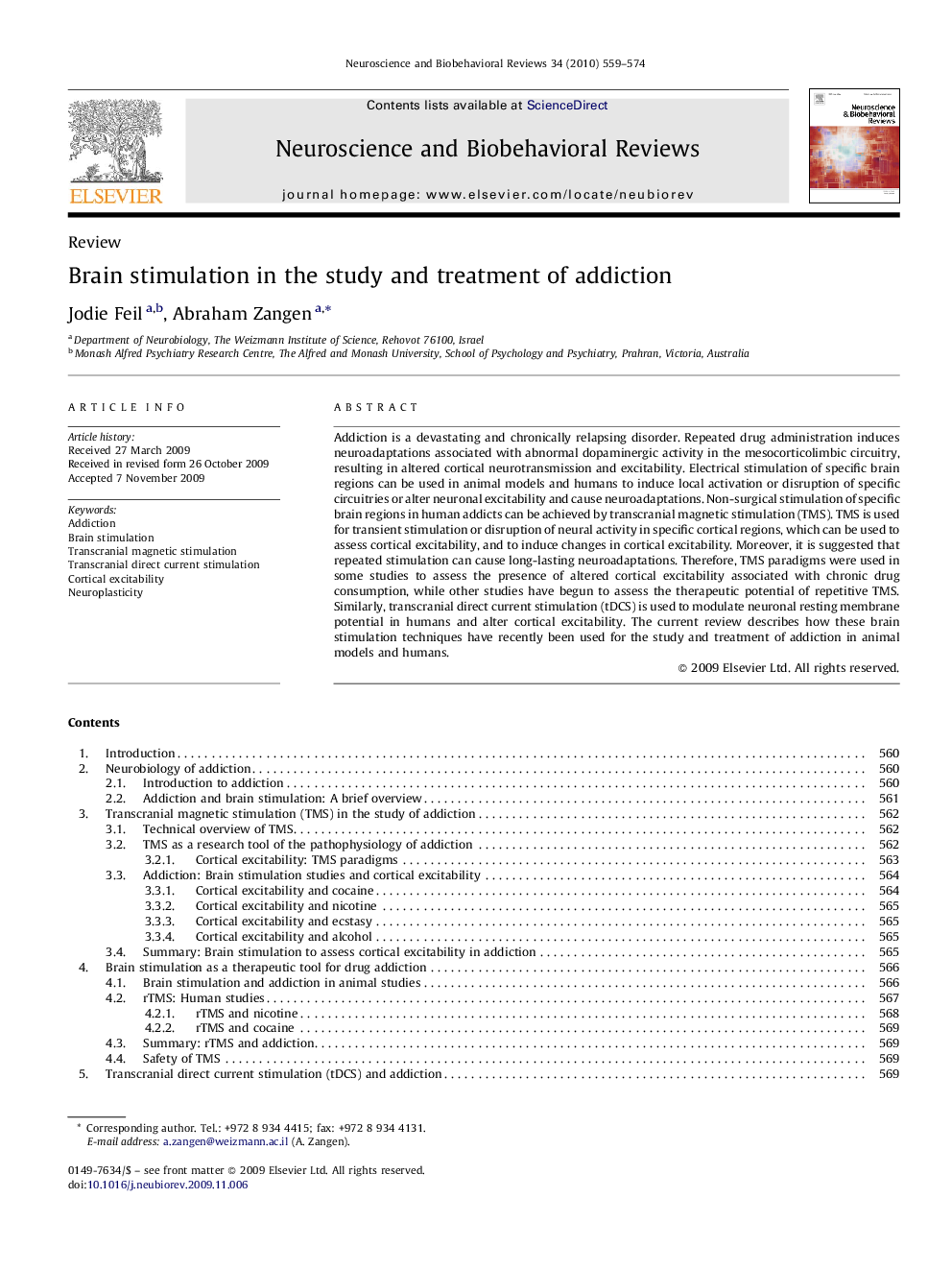| کد مقاله | کد نشریه | سال انتشار | مقاله انگلیسی | نسخه تمام متن |
|---|---|---|---|---|
| 938132 | 924585 | 2010 | 16 صفحه PDF | دانلود رایگان |

Addiction is a devastating and chronically relapsing disorder. Repeated drug administration induces neuroadaptations associated with abnormal dopaminergic activity in the mesocorticolimbic circuitry, resulting in altered cortical neurotransmission and excitability. Electrical stimulation of specific brain regions can be used in animal models and humans to induce local activation or disruption of specific circuitries or alter neuronal excitability and cause neuroadaptations. Non-surgical stimulation of specific brain regions in human addicts can be achieved by transcranial magnetic stimulation (TMS). TMS is used for transient stimulation or disruption of neural activity in specific cortical regions, which can be used to assess cortical excitability, and to induce changes in cortical excitability. Moreover, it is suggested that repeated stimulation can cause long-lasting neuroadaptations. Therefore, TMS paradigms were used in some studies to assess the presence of altered cortical excitability associated with chronic drug consumption, while other studies have begun to assess the therapeutic potential of repetitive TMS. Similarly, transcranial direct current stimulation (tDCS) is used to modulate neuronal resting membrane potential in humans and alter cortical excitability. The current review describes how these brain stimulation techniques have recently been used for the study and treatment of addiction in animal models and humans.
Journal: Neuroscience & Biobehavioral Reviews - Volume 34, Issue 4, March 2010, Pages 559–574